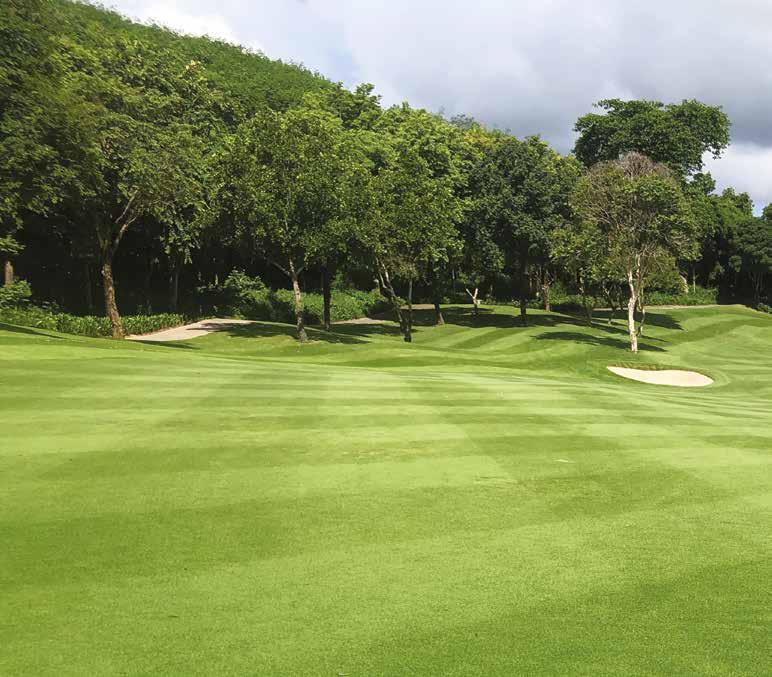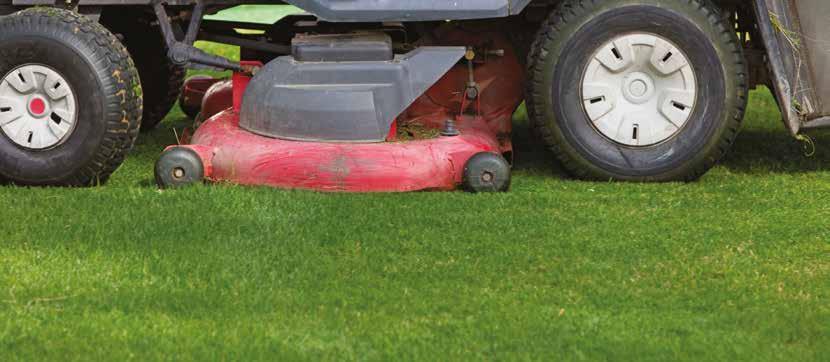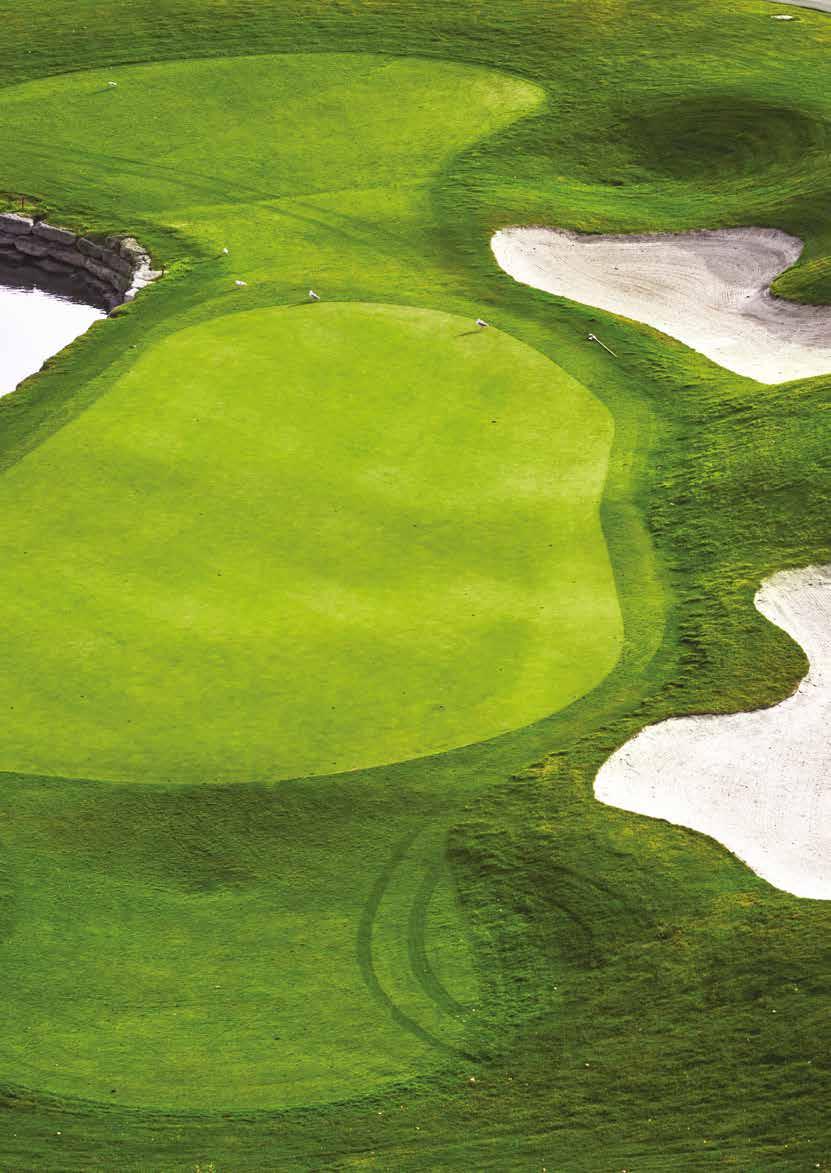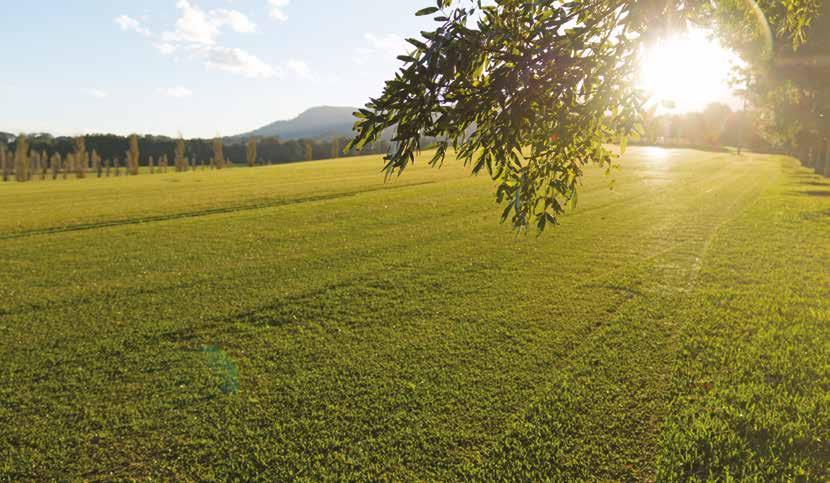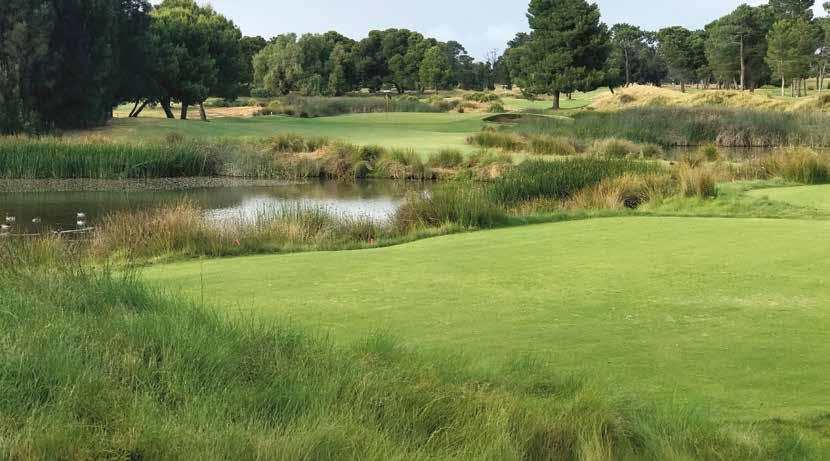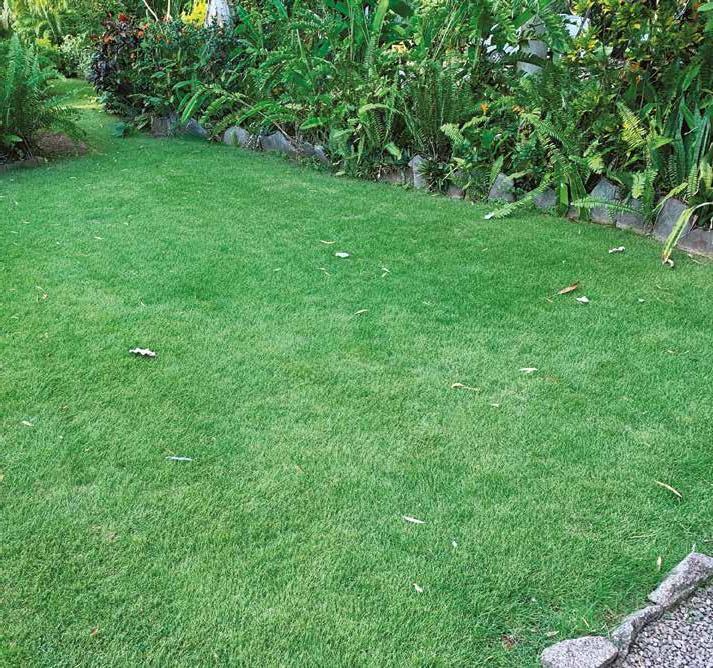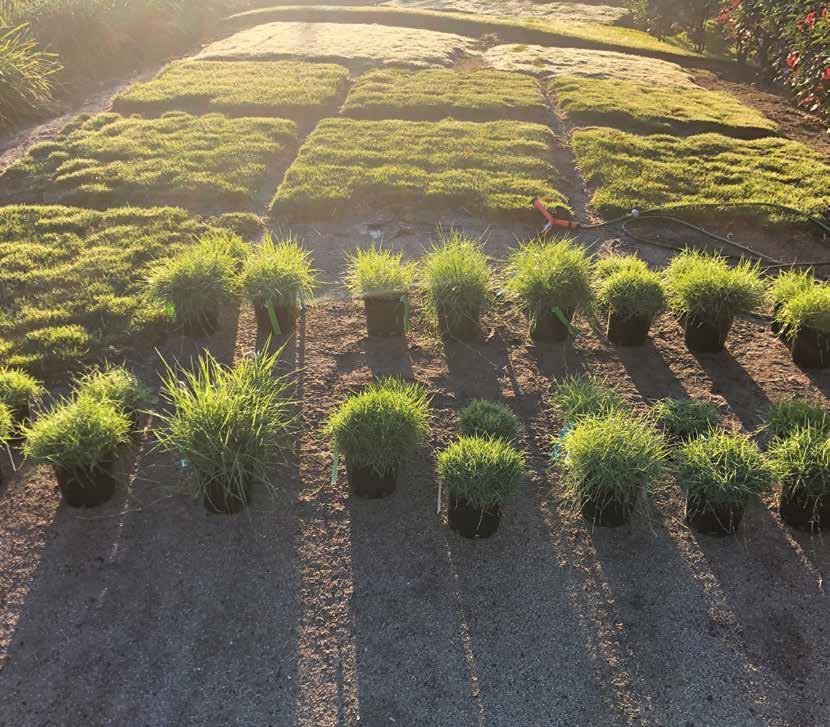
8 minute read
STRI AT THE SAUDI CUP
REALISING SAUDI ARABIA’S RACECOURSE VISION
Advertisement
- His Excellency Prince Bandar bin Khalid Al Faisal (chairman of the Jockey Club of Saudi Arabia)
STRI Group recently completed one of the most ambitious projects in its 90-year history – a turf racetrack in the challenging terrain of Saudi Arabia. Head of consultancy, Richard Stuttard, lifts the lid into how this mammoth project was delivered.
Back in spring of 2019, STRI was asked to determine the feasibility of developing a turf racetrack in Saudi Arabia – the conclusion was, with careful planning and the development of a bespoke construction and maintenance regime, that yes this could be done. Soon after STRI principal technical consultant, Dr Richard Gibbs, and Mr Stuttard found themselves in the presence of his Excellency Prince Bandar Bin Khalid Al Faisal (chairman of the Jockey Club of Saudi Arabia) to outline their strategy for achieving his vision of making Saudi Arabia a destination for world class horse racing on turf. Critical to achieving this was the delivery of an elite turf track in time for the inaugural running of the world’s richest horse racing event, the Saudi Cup – to be held in just nine months’ time.

In July 2019, STRI were engaged as principal contractors for the engineering and construction of the new turf track at The King Abdulaziz Racecourse – the home of The Saudi Cup. STRI were to provide an end-to-end design, build and operate solution to Riyadh Equestrian Club that was to be ready for racing in February 2020. It was clear this was now a major project.
Making racing history
To meet Prince Bandar’s vision of the first ever elite turf racetrack in Saudi Arabia, the course had to perform to the highest possible standards and be constructed using the finest materials available. The entire design required the construction and establishment of the track to be undertaken in a record-breaking period of just six months, requiring a large-scale resource input to achieve such a fast turnaround.
Key challenges
The major hurdles to overcome were timescales and climate. Following initial engagement in July 2019, STRI’s teams of researchers and consultants quickly established the most effective way of producing a surface that would meet the needs of their client. STRI on-the-ground mobilisation was immediate, to ensure they made the most of the time available to deliver the track and deal with the challenging and variable climate of Saudi Arabia.
Design and build
Engineering a track of this standard is a highly complex process requiring input from world-leading experts in drainage, irrigation, construction, materials analysis and biomechanics.
The primary constituents that make up the track are relatively few, but the type and amounts of those constituents are critical to making the track a success. First steps are to understand the baseline environment of the development site. The STRI team conducted a detailed study of the site including a comprehensive review of climatic conditions.
From there, an extensive materials selection regime was undertaken, taking a range of sands and gravels from around the Kingdom and testing them for their compatibility to create a firm surface ideal
Saudi Cup
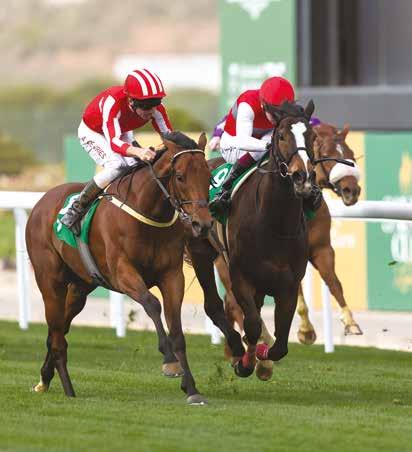
for racing. This rootzone, once mixed with stabilising fibres, provides the perfect medium within which to install the grass surface.
The construction process itself was rapid and extensive resources were drafted from across the Gulf Cooperation Council (GCC) to excavate the existing track material and install the new one. Timing was critical and the earth movement work had to be completed at breakneck speed as they needed to be ready to sow with the selected grass species as soon as temperatures reached the optimal level.
The turf track
To meet the needs of a winter race in Saudi Arabia, the track was established with a “cool season” grass species – i.e a species usually found in more temperate climates. This grass thrives in the winter climate of Saudi Arabia and, when combined with a special blend of stabilising fibres incorporated into the mix, it provides a surface which not only performs exceptionally well but also looks visually stunning.
Once sown, a daily bespoke maintenance regime was developed to ensure the correct levels of water and fertiliser were applied to maximise strong sward establishment. Deep rooting was critical to develop a grass surface that not only looked fantastic, but also held together under the stresses created by a galloping horse. Checking the irrigation system
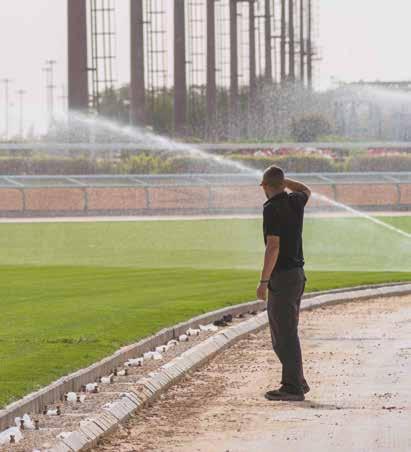
After several months of careful maintenance, STRI were delighted to have presented and demonstrated, a track that is befitting of this prestigious race event. From Queensland, research manager reassure the grassing strategy and selection
Sustainability and future-proof design
Sustainability underpins STRI’s approach to all their design projects. STRI R&D teams are continually innovating technologies to make developments more sustainable, through the construction and operational phases of their lifecycles.
This not only relates to sustainability from a climate perspective, with the key pressures their in-house R&D combined with global
being water and resource use, but also the work with clients to design facilities which will fit their business model needs in the short, medium and long-term.
For example, water use per capita in the Middle East is amongst the highest in the world. Current forecasts suggest that local aquifers will run dry in the next 20 years. STRI develops technologies and techniques to reduce the water availability and the need to have a surface a challenge. Striving to achieve the wider
requirement of natural turf.
Working with STRI
STRI as a global company came together to assist in the planning of this great project including from Australia.
From Victoria, sports turf consultant Peter Andersen assisted in the preparation of the technical specifications, profile sand selection and grassing options. Peter has preparation of 6 major racing tracks and ongoing benchmarking of many racing surfaces in Australia.
Carlos Sartoretto was determined to of the cool season grass for the Cup. Carlos managed the only outdoor turf design and research facility in the Middle East and had over two years of turf trials in the region prior to managing STRI’s research in Australia.
Final thoughts
HRH Prince Bandar’s project in Riyadh is a great example of the ability to problem solve. STRI has made its name developing elite sports surfaces across the world and network means that they are able to adapt to even the most challenging of situations. However, it is exactly these kinds of projects that STRI relish the opportunity to get involved in.
The timescales, climate, resource of exceptional quality all made this project been involved in racing over 15 years with
National Vision 2030, STRI believe this facility will form part of a network of world leading venues in the region and create a global powerhouse of natural turf racing.
Grub control in spring – sequences and combinations


Controlling grubs is a standard issue a turf manager gears up for each spring. Not because they want to – but because they have to. This is a predictably recurrent group of pests for which population numbers do change year to year but predicting which year is coming hasn’t been mastered yet so an assumption has to be made an ‘average’ year is likely. For most sites an average year would still be problematic for spring / summer cropping if no counter measures were in place. We therefore treat in a proactive and pre-emptive manner to protect and preserve the crop.
When we discuss grubs (larvae) on turf farms in spring and summer we are generally talking about the larvae of African black beetle, Argentinean scarab and possibly Billbug. For these, the most proven and reliable options arguably have been the traditional neonicitinoids thiamethoxam and imidacloprid, and the newer generation diamide chlorantraniliprole (Acelepryn). Sometimes for cost or programming reasons we look at using one or the other but using both in sequence or combination may actually be the better way to go to deliver optimal protection AND extended coverage. African Black Beetle and Larvae The inherent differences both chemistries have in solubility and soil persistence in conjunction with split applications supported by registered labels leave the door open for various scheduling options to be employed. These can be matched to crop stage, harvest schedules and / or season. Look to make use of these to suit your site needs but keep one eye on the tail end of the summer when planning the roll out of these programs as we get a different set of pests (Lepidoptera grubs e.g. Lawn army worm) that can be devastating when present in good number. Spring focused programs can sometimes exhaust annual use limits of products like Acelepryn leaving coverage options short in Autumn. Lepidoptera grubs are an absolute strength of Acelepryn so having this still available if needed can make very good sense. The other benefit of the various scheduling options is the ability to move between chemistries achieving genuine chemical rotation whilst concurrently matching shorter-term needs to shorter duration products and leaving the longer-term needs to those with greater persistence. Right product, right place, right time!
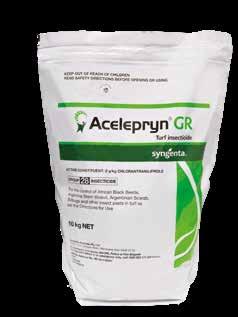

For more information visit www.nuturf.com.au

